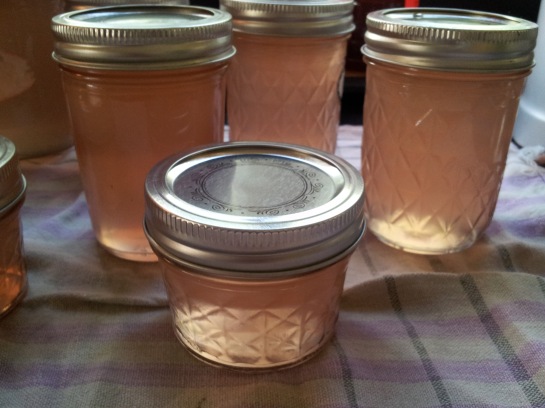
Sonya and I are both agriculture lovers, though we live in relatively urban areas — Sonya in NYC, me in a “streetcar” suburb of Boston (one of the communities that sits along what once was a route of streetcars that ran around the circumference of the city in an 8-mile radius). Umpteen years ago, Sonya gave a lovely little apple tree to me and her father, Don, as a gift. We planted it in the middle of our small garden, surrounded by a few other edible backyard crops such as a massive raspberry patch and a sprawling concord grape vine, which shades our entire deck in summer. Both of these crops result in annual harvest traditions — the raspberries become jam and the grapes become concentrated juice (which we usually drink mixed with water or seltzer).
The apple tree unfortunately has much of its sunlight obscured by tall trees surrounding our backyard, and until this year we have let it grow with minimal interference on our part – just giving it a basic annual pruning. While we’ve enjoyed seeing it outside the kitchen window, and it has acted as a shield from the sightline of a neighboring house, it has produced just a few small apples over the years. One year we took the extra step of spraying a dormant oil on the tree in March, but basically we have played at this endeavor and not regularly done the things that need to be done in order to get a proper crop. Until last year, when we did a major pruning which chopped down the overgrown vertical branches and left one large branch reaching out towards the south (aka sun). By late June of this year, it was obvious that we had some very pretty apples growing on the tree, and lots of them. The tree seemed grateful for its haircut and decided to produce on that south-reaching branch. By late September, most of the apples were beautifully red and round (the apples in the photo below were the rejects — I never had the chance to photograph the apples pre-jelly making). The only problem was that the nice white insides were dotted with brown spots. We did not see any worms or other pests, just blemishes. I tried making applesauce, but the whole thing turned a very unpleasant brown color, much darker than usual. I did not have a cider press available, so I turned to the culinary activity that I know and enjoy — making a preserve.

One of the mythical stories about my paternal grandmother, Rosa, in Germany was her preserving of fruits for the winter. It always feels like a connection to that dear lady when I do this activity. So, making apple jelly became the answer to using these imperfect apples. This jelly is a lovely translucent light pink color, but is a bit too sweet to my taste (I was afraid to use less sugar, as it was my first time making apple jelly). The recipe calls for seven cups of sugar to four cups of fruit juice. Despite the sweetness, it has a fresh, subtle flavor and aroma of apple and tastes good on top of breakfast toast with butter. I used the recipe for apple jelly from the little pamphlet included in the package of Certo pectin.
–Gaby















































